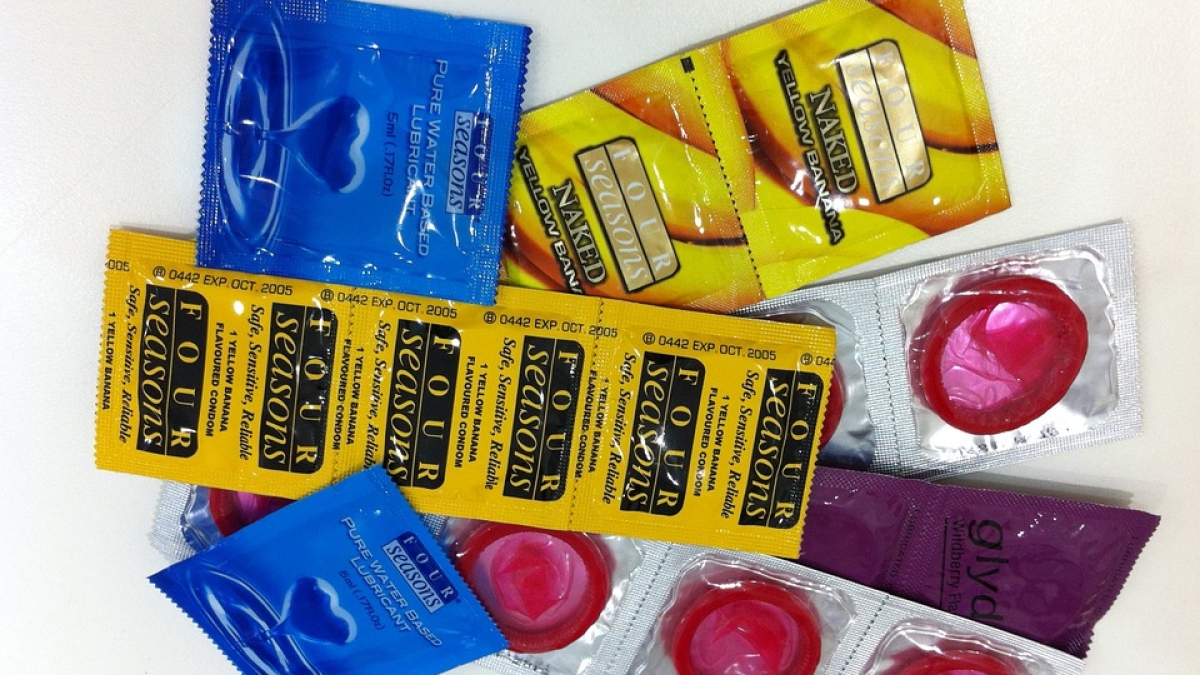During her undergrad years as a peer educator for her university’s sex ed program, Kelly Davis realized the power of statistics. In her most recent paper, the Arizona State University College of Nursing and Health Innovation associate professor quoted some alarming ones: Nearly 20 million new STIs occur each year in the U.S. — half among young adults ages 15-24 — yet only about 47 percent of men ages 18-24 and about 53 percent of men ages 25-29 reported using condoms during their most recent vaginal intercourse with a casual sex partner.
In the associated study, Davis sought to understand the reasons behind condom-use resistance and the factors that contribute to it. About 300 men — some who were historically sexually aggressive, some who were intoxicated, some who were both and some who were neither — were randomly assigned to read a sexual scenario and asked if they would continue the scenario by engaging in unprotected sex.
If so, they were asked what tactics they might use to convince their partner not to use a condom, with tactics falling into two categories: coercive or noncoercive.
“The guys who were most likely to engage in coercive condom-use resistance were guys who had been sexually aggressive, who were intoxicated,” Davis said. “Both in terms of research and intervention and prevention programs, we need to be thinking about sexual violence and sexual risk together."
Davis discussed the nuances involved in condom-use resistance, as well as some potential intervention and prevention strategies.
To learn more about ASU’s resources for sexual wellness and sexual violence, visit the Live Well @ASU website.
Question: Why do men engage in condom-use resistance?
Answer: The men that we talked to in our studies have reported that the primary reason is exactly what you would think: That it doesn’t feel as good; the sex just isn’t as pleasurable. Though some men have said that sometimes sex with a condom can be more pleasurable, not necessarily physically, but because they know they’re being safe, so they can relax and enjoy it. But I think the biggest reason people report for condom-use resistance is really about pleasure. And women say that, too.
Q: So women also engage in condom-use resistance?
A: Yes. I have some papers coming out where we look at women's condom-use resistance, and we found that women use similar tactics as men but less often. There are some tactics women can use that men can’t, such as lying that they’re on birth control. But there are also some tactics women can’t use, like stealthing, which is nonconsensual condom removal. Someone acts like they’re going to use a condom and then doesn’t actually put it on or surreptitiously removes it without their partner's knowledge and proceeds to have sex. We found that almost 10 percent of men in the study had done that in the past. Stealthing is really problematic because women think a condom was used, so they’re less likely to seek treatment for STIs or prophylactics, such as Plan B.
Q: What’s the difference between coercive and noncoercive condom-use resistance tactics?
A: Noncoercive tactics are things like saying you don’t have an STI or that sex would feel better without a condom. But the woman still has agency and power around making that decision. Coercive techniques are more manipulative and forceful. In this particular paper, we were specifically interested in two types of coercive resistance: emotional manipulation and deception. Emotional manipulation is saying things like, "I’m going to be angry if you insist on using a condom." So threatening their partner emotionally, essentially. And deception could be something like lying that you don’t have any STIs or lying that you have a latex allergy. Stealthing is also deception.
Q: You also looked at how sexual aggression history and alcohol use affect condom-use resistance. Why did you focus on those two factors specifically?
A: People react differently in these situations based on two key factors: One is what they bring into the situation; men who have been more sexually aggressive in the past will respond differently than men who haven’t. The other is how that interacts with what’s going on in the situation; if they’ve been drinking, how they’re feeling emotionally, etc. Obviously we know that alcohol is associated risk taking. There is a phenomenon called alcohol myopia where, when we’re intoxicated, our brains don’t work as well. They tend to focus on things that are the most salient in the moment. Studies have shown, especially in terms of sexual risk taking, what our brains are focusing on in that moment is sexual arousal and pleasure, not getting pregnant, for example. So it’s not as simple as every single person who has a history of aggressive behavior goes into this situation and behaves this way. It doesn’t work that way. That’s part of it, but it’s also about what happens in that situation. Are there particular things that would make those unhealthy behaviors more likely? Knowing that can help us develop potential strategies for prevention.
Q: Based on your findings in this study, what are some possible strategies to prevent condom-use resistance?
A: We found that among men who have a history of sexual aggression, alcohol exacerbated their likelihood of engaging in coercive condom-use resistance. So we could focus on programs that help them drink less frequently or avoid alcohol in sexual situations. Another strategy would be to teach skills about how to regulate emotions in a way that would drive more positive choices. There’s a study going on right now teaching emotion regulation skills to sexual aggression perpetrators, looking to see how they’re able to use those skills in sexual decisionmaking tasks and if their ability to do that is affected when drinking. So teaching them about how emotions are affected by drinking and teaching them skills to regulate those emotions could help.
Top photo courtesy of Pixabay.com
More Health and medicine

ASU's Roybal Center aims to give older adults experiencing cognitive decline more independence
For older people living alone and suffering from cognitive decline, life can be an unsettling and sometimes scary experience.Arizona State University is out to improve that experience.Two projects…

Dynamic data duo advances health research
The latest health research promises futuristic treatments, from cancer vaccines to bioengineered organs for transplants to medical nanobots. While these technologies may one day be…

New study reveals high levels of toxins in seized cannabis from Arizona and California
A recent study conducted by researchers from Arizona State University has uncovered alarming levels of Fusarium mycotoxins in illicit cannabis samples seized in Arizona and California.The study found…


